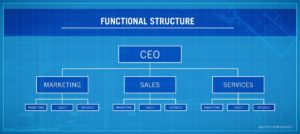There are various skill sets required at a workplace to conduct and complete all the tasks and responsibilities efficiently and effectively. And one of them…
Safety Stock: Definition, Examples, Disadvantages and How to Calculate it?
Safety stock is defined as the extra stock that is preserved by a business entity to minimize the risk of a shortfall in their existing…
10 Common Barriers To Critical Thinking
Critical Thinking is not only required by an individual in the streams of academics and the business world but also in life as well. It…
Business Risk: Definition, Types, Importance and How to Minimize it
In simple terms, business risks can be understood as the risks, threats, uncertainties associated with a business that may hamper in accomplishing the financial goals….
Price Lining: Examples, Advantages and Disadvantages
Price Lining is a retail marketing technique where Products and services of the same category are grouped in the different price range based on their…
Backward Integration: Meaning, Importance and Examples
Have you heard about backward integration? Confused how such a term plays a key role in managing and optimizing a business? Then let me define…
What is Product Development Process? Definition, Examples & Steps
The product development process is the inclusion of all the steps used for taking a product from the concept development stage to making it available…
Free On Board: Meaning, Advantages Of Free On Board Contract
Free On Board or FOB as it is commonly referred to is a trade term that signifies a seller’s commitment to delivering the promised merchandise…
Diffusion of Responsibility: Definition, Characteristics & Factors
Diffusion of responsibility is defined as a psychological phenomenon in a social setting. Sometimes when an individual is in a group, he will hesitate to…
Barriers To Entry: Meaning, Types, Examples
Barriers to entry can be defined as the blockades that a new startup or a company faces entering a market. Barriers can be of different…
Middle Management: Role, Importance, Examples, and Skills
Middle management is defined as the management level that reports to higher managers and manages at least one – two subordinate level of managers. Its…
Functional Organization: Definition, Examples, Features, and Advantages
The functional organization is designed on the typical hierarchy system where position and job requirement of every employee is defined. The organization is also divided…
Sales Broker: Role, Advantages and Disadvantages Explained
A broker can be an individual or a firm which helps in the execution of a transaction between a buyer and a seller. A broker…
The History Of Search Engines (Complete Timeline from Starting)
When it comes to search engines, Google is the most powerful one without which we cannot imagine our lives today. But have you ever thought…
Internal Control: Meaning, Types, Components and objectives
Internal control can be defined as the process of accounting, auditing, reviewing the system, methods, and accounts of an organization in order to make sure…














